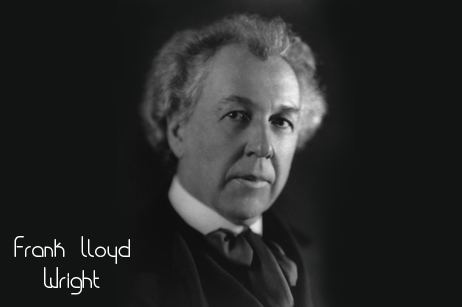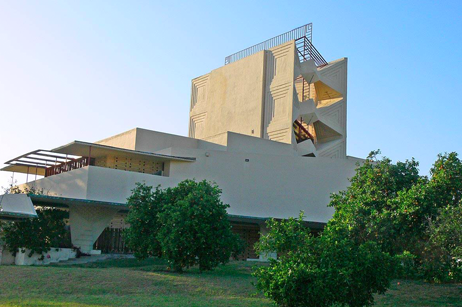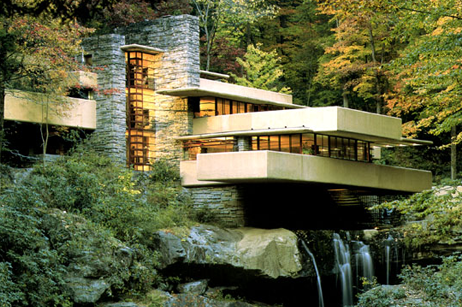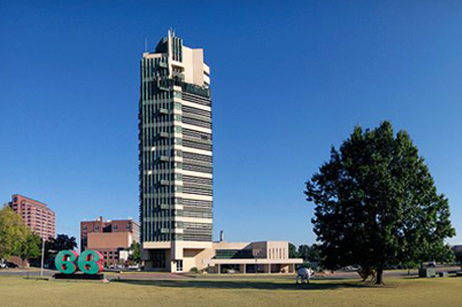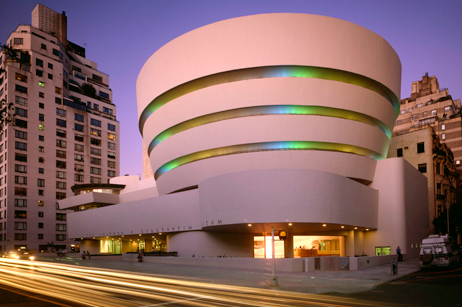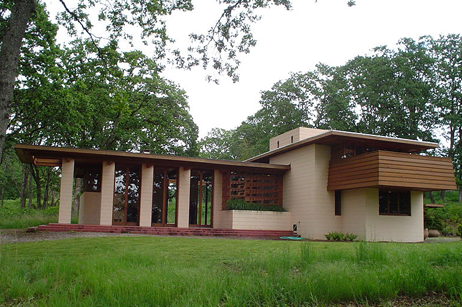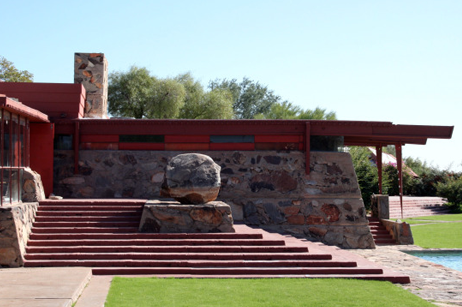Frank Lloyd Wright is the architect most think of as the father of green, sustainable architecture. Working mainly in the first half of the 20th century, Wright pioneered the philosophy of organic architecture, beloved by Eric Corey Freed, which takes into account the nature of a site, needs of the client and nature of the materials before designing a building, rather than creating a design plan and then trying to make those three elements conform to the plan.
Because organic architecture is a philosophy and not a style, its principles allowed Wright to create diverse structures, such as the concrete Unity Temple in Illinois, his stucco-and-stone home and studio in Wisconsin, and Fallingwater, the famous house he built in Pennsylvania that was constructed from concrete, stone and glass and set over a waterfall [source: Taliesin Preservation]. While these buildings may not be considered green according to today’s standards, whenever you build something in harmony with its surroundings — that avoids bulldozing trees, for example, or filling in marshland — that’s a plus for the environment.
And Wright was definitely on to something; today more than one-third of his buildings are on the National Register of Historic Places or part of National Register Historic Districts; 24 are National Historic Landmarks; and, in 2008, Taliesin, his Wisconsin home, was one of 10 Wright-designed buildings submitted by the U.S. National Park Service for World Heritage Status [source: Taliesin Preservation]. In addition, many of today’s prominent green architects, including Freed and Glenn Murcutt, were influenced by Wright’s philosophy and designs.
(McManus, Melanie Radzicki. “10 Influential Green Architects” 08 May 2012. HowStuffWorks.com. <http://home.howstuffworks.com/home-improvement/construction/green/10-influential-green-architects.htm> 21 October 2013.)
Annie Pfeiffer Chapel
The Ann Pfeiffer Chapel was the first building to be constructed on the campus. Beautifully placed on a slightly rising slope in a tropical garden-like environment, it is ideally a building for the meditative spirit. No view extends to the outside, except from balconies that project from the second level. The concrete block walls are […]
Kaufmann House
Fallingwater, the house designed by American architect Frank Lloyd Wright for Edgar Kaufmann in southwestern Pennsylvania, hangs over a waterfall using the architectural device known as the cantilever. Wright described his architectural style as “organic”–in harmony with nature, and though Fallingwater reveals vocabulary drawn from the International style in certain aspects, this country house exhibits […]
Price Tower
The Price Tower is a nineteen story tower in Bartlesville, Oklahoma that was designed by Frank Lloyd Wright. It is the only realized skyscraper by Wright. The Price Tower was commissioned by Harold C. Price of the H. C. Price Company, a local oil pipeline and chemical firm. It opened to the public in February […]
Guggenheim Museum NYC
In June 1943, Wright received a letter from Hilla Rebay, the art advisor to Solomon R. Guggenheim, asking the architect to design a new building to house Guggenheim’s four-year-old Museum of Non-Objective Painting. The project evolved into a complex struggle pitting the architect against his clients, city officials, the art world, and public opinion. Both […]
Gordon House
The house was designed in 1957 for Evelyn and Conrad Gordon, and finished in 1963 (four years after Frank Lloyd Wright’s death). It was originally located adjacent to the Willamette River, near Wilsonville, Oregon. When its 2001 owners intended to destroy it, the Frank Lloyd Wright Conservancy obtained a three-month reprieve to dismantle it, and […]
Taliesin West
Taliesin West was built in the mid-1930′s, and is an example of Wright’s concept of organic architecture — building that evolves naturally out of it’s location. He design and built ecological sound, sustainable architecture long before it’s current popularity. It’s no surprise then, that Wright, along with some architectural apprentices, gathered desert rocks and sand […]



